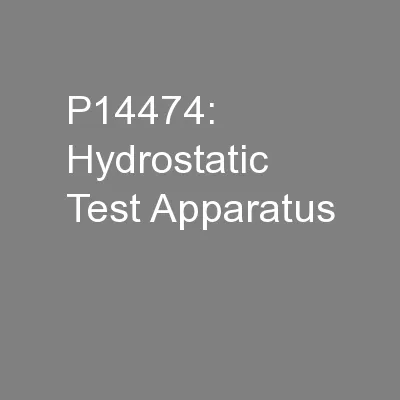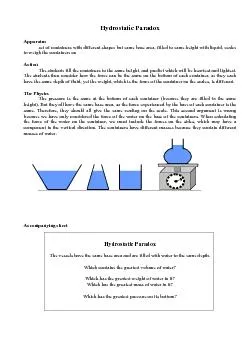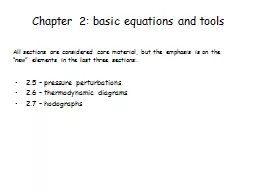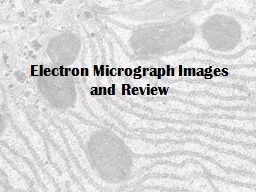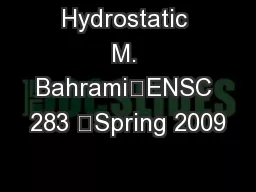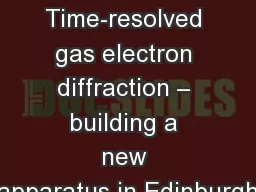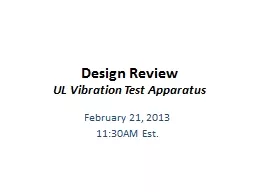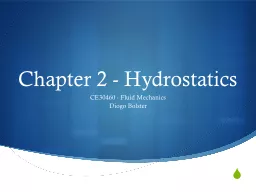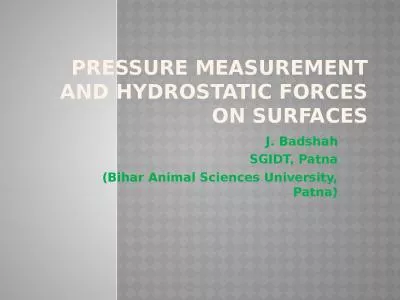PPT-P14474: Hydrostatic Test Apparatus
Author : myesha-ticknor | Published Date : 2016-05-08
Jake Manley Anushka Kalicharan Mitchell Sedore Brian Benner Kyle Abbott Project Overview Goals Control pressure ramp rate and time Test enclosures against UL1203
Presentation Embed Code
Download Presentation
Download Presentation The PPT/PDF document "P14474: Hydrostatic Test Apparatus" is the property of its rightful owner. Permission is granted to download and print the materials on this website for personal, non-commercial use only, and to display it on your personal computer provided you do not modify the materials and that you retain all copyright notices contained in the materials. By downloading content from our website, you accept the terms of this agreement.
P14474: Hydrostatic Test Apparatus: Transcript
Download Rules Of Document
"P14474: Hydrostatic Test Apparatus"The content belongs to its owner. You may download and print it for personal use, without modification, and keep all copyright notices. By downloading, you agree to these terms.
Related Documents

